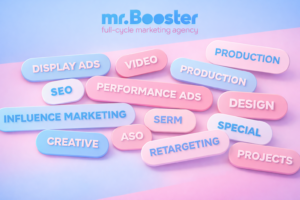Most brands think carefully about what they’re saying, but often forget how they’re saying it.
That “how” is tone. It’s the personality of the message, and when executed well, it makes everything more accessible, more memorable, and more human.
But here’s the thing: getting the tone just right is tough. And maintaining it across various platforms, audiences, and formats? Tougher.
This is where voice changers come in. Not as a gimmick. As a genuine creative experimentation tool.
They provide marketers, creators, and brand teams with a quick, nimble method to experiment with distinct vocal styles prior to committing to a tone.
And with voice changers like the Murf AI voice changer, switching between voices, tones, and delivery styles is a matter of minutes, not days.
Let’s demystify why voice changers are worth the investment and exactly how to utilize them.
What Is a Voice Changer (And What It’s Not)
A voice changer is a device that allows you to modify the sound of a chunk of audio, without having to re-record from scratch.
That might be altering pitch, gender, tone, pace, or even emotion. But this isn’t about voice disguise. The intent is tone shaping. It’s about selecting the appropriate voice to communicate your message.
The top voice changers now, particularly those that employ AI, deliver a realistic output that’s difficult to separate from a true voice acting professional. And that brings a whole new dimension of brand agility.
Why Use a Voice Changer?
Here’s why voice changers are truly valuable when testing brand tone:
- You Can Try Out Multiple Tones Without Hiring Multiple Voice Actors
Perhaps you’re curious to know what your script reads like in a soothing, relaxed voice compared to something fast-paced and energetic.

With a voice changer, you don’t need two employees. You simply try out both voices in an instant.
- Ideal for Testing Regional and Demographic Fits
Launching a campaign across multiple markets? You can experiment with varying accents, age ranges, or tones to determine which sound works best in context.

Consider Gen Z TikTok-style reels versus B2B training videos – completely different energies, same underlying message.
- It Accelerates the Creative Process
Daisy-chaining voiceover talent, recording sessions, or rewrites can delay production. Voice changers enable you to swap out and tweak quickly.

You can try things out without investing in costly re-recordings.
- Amazing for Brand Tone A/B Testing
Do you want to see if your viewers prefer an energetic female voice or a stable male narrator?
Use voice variations, test, and measure engagement. You’re not speculating anymore – you’re discovering what performs.
- It Saves Money (Without Sacrificing Quality)
Requiring several voice actors, scheduling recording time, and editing costs money and time. Voice changers save that in half without sacrificing clean, quality sound.
How to Use a Voice Changer: Step-by-Step Guide
Let’s assume that you’re creating an explainer video and wish to try out a tone without committing to the final voiceover. Here’s how you would employ AI voice changers, like Murf.ai.
Step 1: Upload or Create Your Script

Murf allows you to type or paste your script into its platform directly. You can arrange content into segments if you’re developing a longer video or podcast.
Step 2: Select a Base Voice

Begin with a default AI voice that suits your overall requirement. Murf has plenty of options available to you – various genders, accents, age groups, and tones.
Step 3: Experiment Using the Voice Changer

Explore variations by modifying:
- Pitch: Higher or lower for mood
- Speed: Fast for high-energy, slow for relaxing content
- Style: Formal, informal, sympathetic, authoritative
- Emphasis & Pauses: Customize delivery for clarity and emotional impact
This assists you in molding the tone until it sounds just fine. You may preview in real time, switch voices on the fly, and compare alternatives side by side.
Step 4: Export and Test
Once you’ve discovered a tone that works, export the sound and test it in your real project, whether that’s a video, ad, social media cut, or e-learning piece.
You can even set up A/B tests with various voice renditions to determine which one resonates with your audience.
When to Resist Voice Changers
They’re strong, but not ideal for all situations. If you require lots of emotion or dramatic narration (such as for an ad campaign that is all about human warmth), a live voice actor may be preferable.
And if your company has a steady, recognizable spokesperson, don’t substitute their voice with tech. That is a trust-breaker.
Use voice changers when you’re testing, learning, scaling, or trying to evolve. Not when authenticity is at stake.
Real Talk: Is It Worth Trying?
If you’re still making videos or audio content the same way you were five years ago – writing a script, hiring a voice actor, waiting for revisions – you’re wasting time and money.
Worse, you’re committing to one tone before you’ve even had a chance to test what actually resonates.
Voice changers provide you with space to experiment. You can listen to your ideas. Craft your tone. Try out voices. Launch quicker. Adapt on the fly.
And the best part? You don’t have to invest until it’s a go.
If brand voice matters to you, then testing out a voice changer like Murf isn’t just a good idea. It’s the next step.








